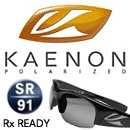
|
|
|
Scuttlebutt News: Team Cobalt at the Archipelago Raid 2009 (A newbie point of view in the world’s toughest dinghy race) (August 27, 2009) The concept of the Archipelago Raid is simple. Each team sails intensely for six days on a Formula 18 catamaran, along a unique 500-mile course drawn among the hundreds and thousands of islands, islets and rocks of the Swedish, Finnish and Åland archipelago. On the way, competitors must find two dozen checkpoints, and must carry enough food and spares to endure and fix the breakages along the way. This is a report from Team Cobalt (Luke Yeates and Matt Humphreys, UK), who this month were the top rookie team in the 2009 race, finishing eighth overall:
Twenty-six boats made it to the start, and with many Olympic, Volvo Ocean race, and America’s Cup sailors in our midst, we knew that we going to be up against it! We loaded the boat with six days worth of food and drink as well as a load of spare parts. This included two spare dagger boards and a spare spinnaker, after hearing competitor’s tales about the previous races. It was going to be a tough race; previous editions have broken sailors and boats alike. We were given the co-ordinates for the first days racing and went about identifying the rocks we would have to avoid in a few hours time. The start was 14:45 on Monday and we headed off after winning the start and getting in good position for the first leg. We got to the first checkpoint and realised we had not practised this yet, as you have to race in to the beach spinnaker up full pelt until the rudders kick up, then have one team member sprint up the beach to the check point to clock in. This happens up to seven times per leg! We struggled at first but got the hang of it by the end and were overtaking boats with ease. Then we had our first run in with the rocks. Whilst sailing downwind in a gybing battle with two other boats - Team Garmin and Audio Networks - and despite having identified the area as dangerous at pre-start and calls from the crew on the navigation, we smacked into them with both dagger boards at 12 knots, losing one foot of the bottom of both boards. After a few hours of paddling, something we under prepared for as well, we ended up at the first checkpoint at 02:00 after a bit of night sailing, where our Tacktick Racemaster with backlight proved most useful. We had just a couple of hours to set up the tent and get some kip before the 04:00 start. The next days are all a bit of a blur with 10 checkpoints a day, no sleep, and up to 16 hours on the water per day. Our results were gradually improving and it was only breakages that were setting us back down the fleet. We managed to repair some major problems with duck tape and Araldite, including one sinking hull and broken steering. These issues were caused by hitting the bottom at speed. With so many uncharted rocks and speeds of up 25.9 knots recorded on GPS, they were almost impossible to avoid, and when you hit a rock it was solid granite lurking just below the surface! A big part of the race is being able to repair the boat as you go; we started the race with four brand new daggerboards and finished with one and a bit! When we hit the rocks the dagger boards snapped off - a couple of them are still floating around in the Baltic. It was common place for boats to finish a leg with only one dagger board and a broken bit wedged into the other dagger board case. Then after some kicking and a lot of Araldite, the case gets repaired and off you go on the next leg with the spare in place. We were constantly trying to sail the most direct route from checkpoint to checkpoint through the tightest gaps, biggest rock minefields, and under the lowest bridges and cables. Whereever there was an inch of navigatable water there was a F18 wedged in it. Twenty-six boats made the start, with 19 boats making it to the finish. There were some pretty big collisions with rocks which had wiped some boats out in the early stages and the big breezeon day 3-4 (up to 30kts) caused more damage and retirements. We finished as the top Rookie Team and 8th overall in a highly competitive fleet; we are definitely looking forward to next year’s edition and improving our result. We were sailing through the most beautiful picturesque scenery but with no time to notice it. I would defiantly recommend a cruising visit to take it all in. The Scandinavian Archipelago is a real wilderness. You can sail for miles and miles without seeing another vessel apart from a load of broken F18’s We would like to say a big thanks to, Cobalt Corporate Finance, Sea Sure, Tacktick Wireless by Suunto, Towergate Mardon, Harken, and Henri Lloyd. Without their support we would not have been able to compete in this extreme race. 
Click here for more images. back to top |







|


